How to take measurements
To find out your personal burda pattern size, you must know your body measurements and compare them to the burda size chart. Wear your undergarments when taking your measurements. The drawings at the left show how and where to take measurements.
Taking Measurements: The Steps
As an aid, wrap a dimensionally stable tape (grosgrain, a tape measure, etc.) around your waist and pin the ends together.
1 Bust: across the widest part of your chest
2 Waist: at the waist on top of the tape
3 Hips: across the widest part of your bottom
4 Bust depth: from the highest point on the shoulder (base of neck) to your bust point
5 Front waist length: From the highest point on the shoulder across the bust point to the lower edge of the tape at the waist
6 Back length: from the lowest neck vertebra (sticks out a bit) to the lower edge of the tape at the waist
7 Shoulder width: from the base of your neck to the shoulder point
8 Sleeve length: with your arm slightly bent, from the shoulder point across the elbow to your wrist
9 Upper arm circumference: around the widest part of your upper arm
10 Neck circumference: at the base of your neck
11 Height: from the top of your head to your foot sole
12 Skirt length: from the lower edge of the tape at the waist downward to the desired length
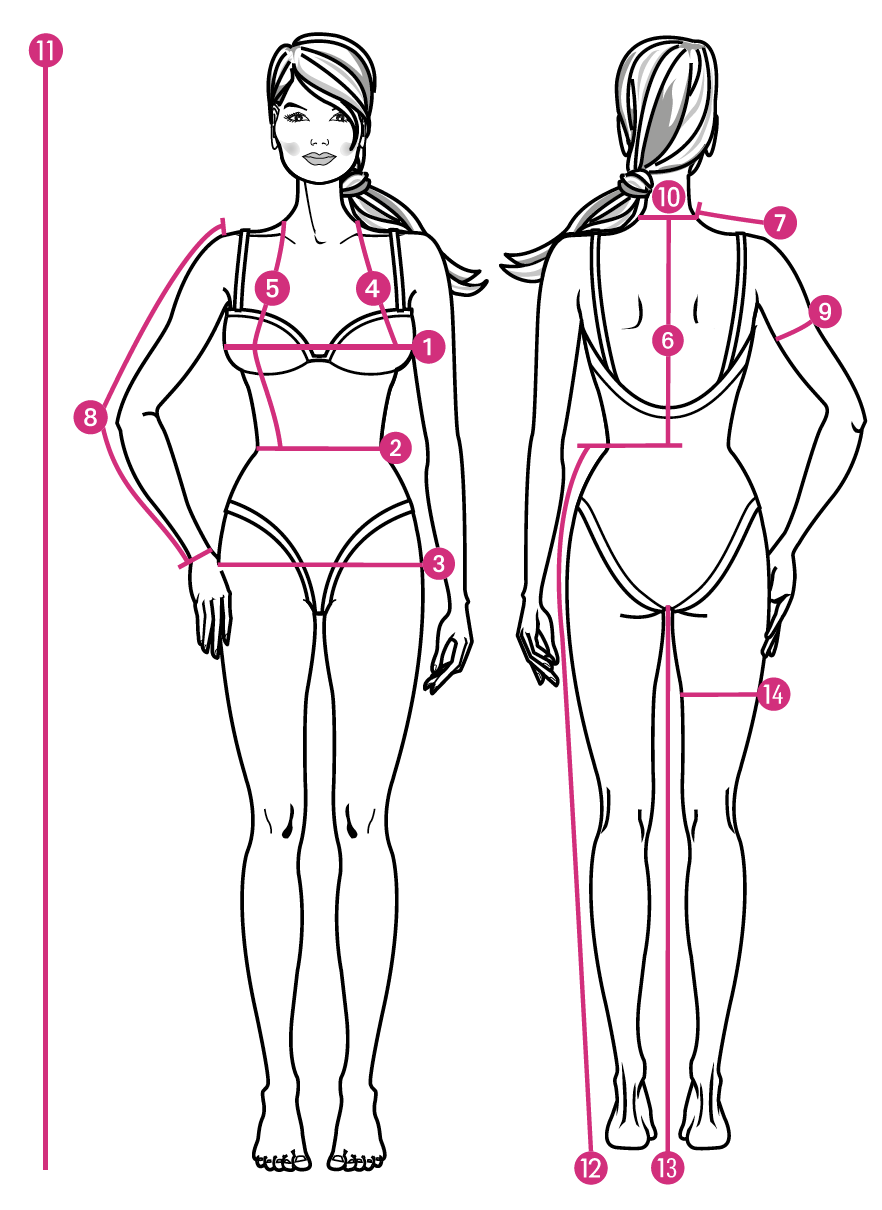

The rule of thumb: You will find the size for dresses, blouses, jackets, and coats according to the bust measurement, and skirts and trousers according to your hip measurement.
If necessary, alter the patterns to the centimetres/inches by which your measurements deviate from the chart. As each pattern contains several sizes and the size lines are next to each other, you can easily switch from one size to another. For example, if you are a size 38 in the bust but need a size 40 in the waist.
Important: Do not measure the pattern pieces. All burda patterns contain the measurements from the table plus the comfort allowances that the particular model requires. Always select the same pattern size irrespective of whether you are making a casual shirt, a figure-hugging dress, or a coat with lots of volume.
TIP Do not use your commercial size. It is not necessarily the same as your burda size. Unlike conventional clothing labels, burda does not have ‘flattering sizes’. Instead, our sizes are based on real, individual measurements.
Sizes Charts
WOMEN'S SIZES (height 168 cm / 5 ft. 6 ins)
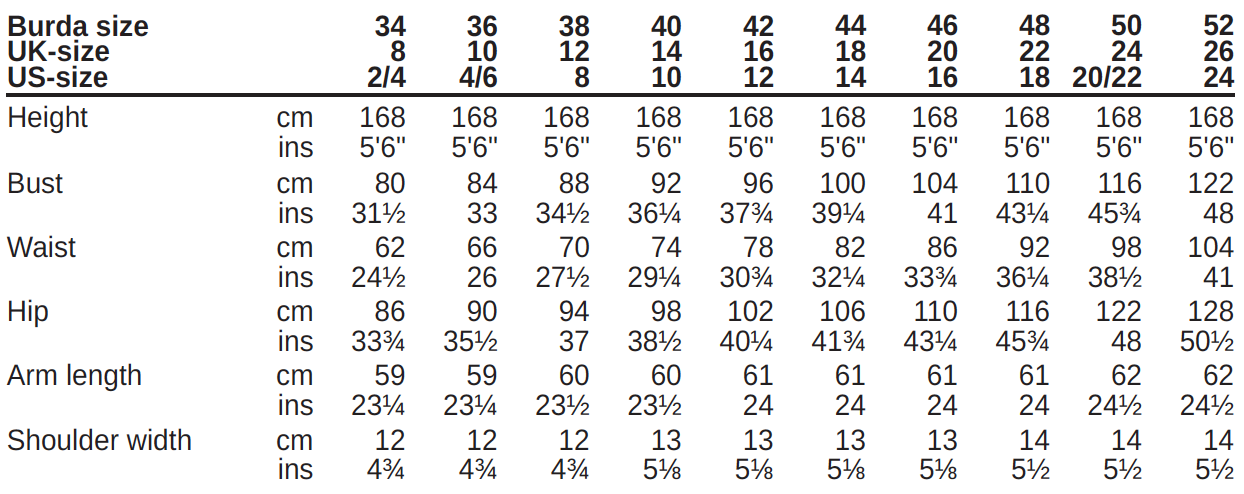

WOMEN'S SIZES BURDA CURVY (height 168 cm / 5 ft. 6 ins)
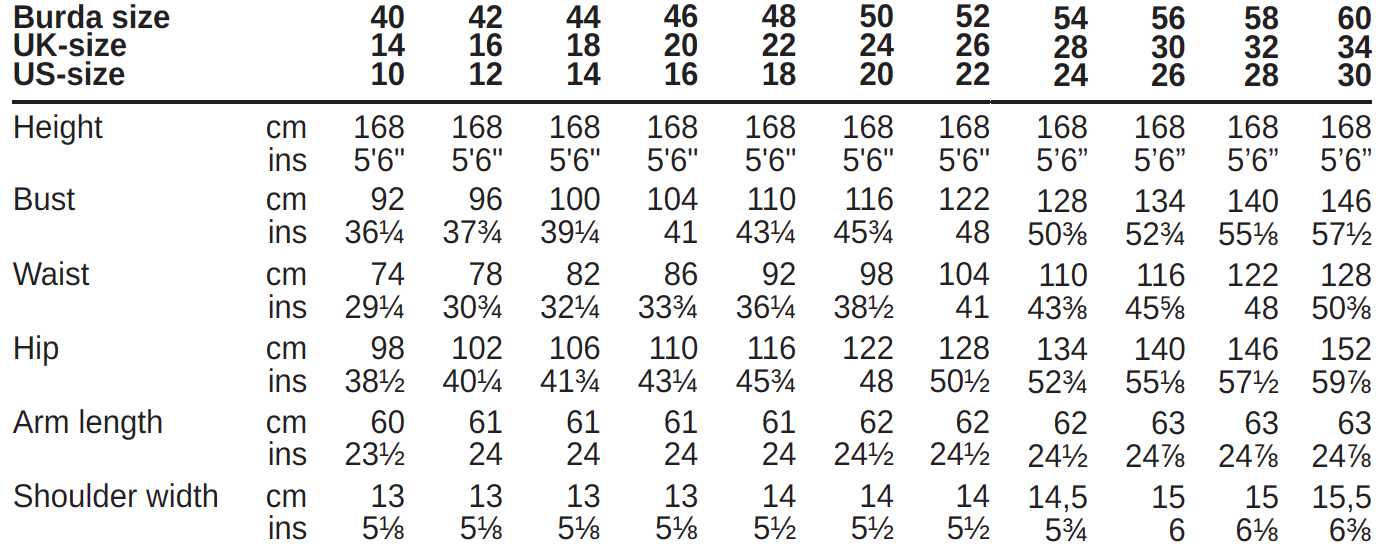

WOMEN'S HALF/PETITE/SHORT SIZES (height 160 cm / 5 ft. 3 ins)
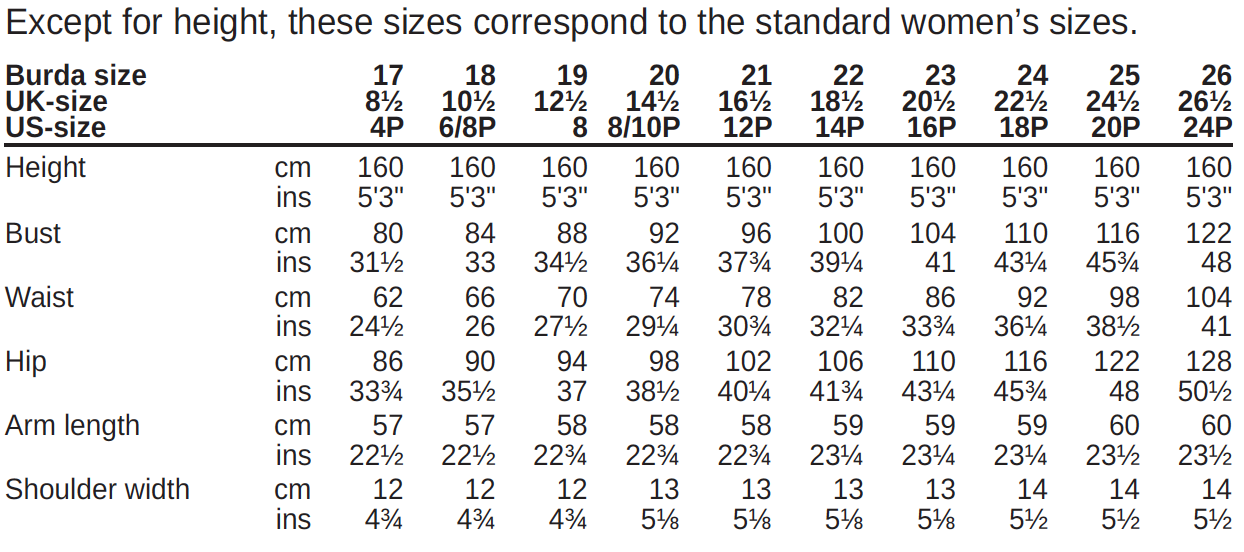

WOMEN'S TALL SIZES (height 176 cm / 5 ft. 9 ins)
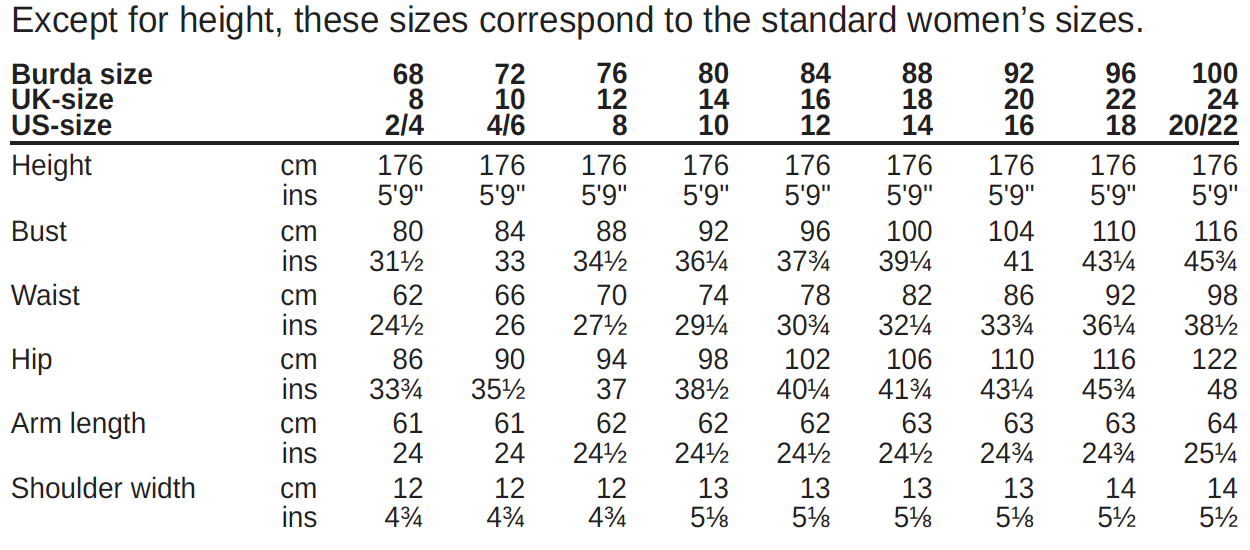

INFANTS' and TODDLER'S SIZES, based on height in cm


GIRLS'SIZES, based on height in cm


BOY'S SIZES, based on height in cm


MEN'S STANDARD SIZES
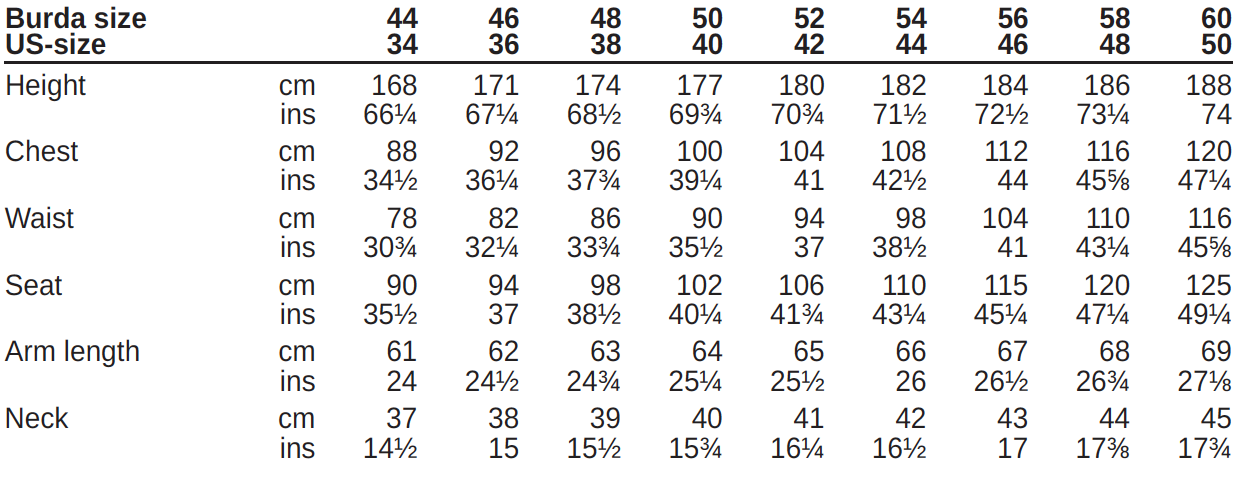

Trousers Measurements
Alongside the hip and waist, for trousers you need additional control measurements: the side seam length, inner leg length, seat and thigh circumference.
2 Waist: firmly across the tape at the waist
3 Hips: across the widest part of your bottom
12 Side seam length: from the lower edge of the tape at your waist to your ankle
13 Inner leg length: along the inner side of your leg down to the ankle
14 Thigh circumference: around the widest part of your thigh
15 Seat: when sitting upright, from the lower edge of the tape at your waist to the seat of the chair
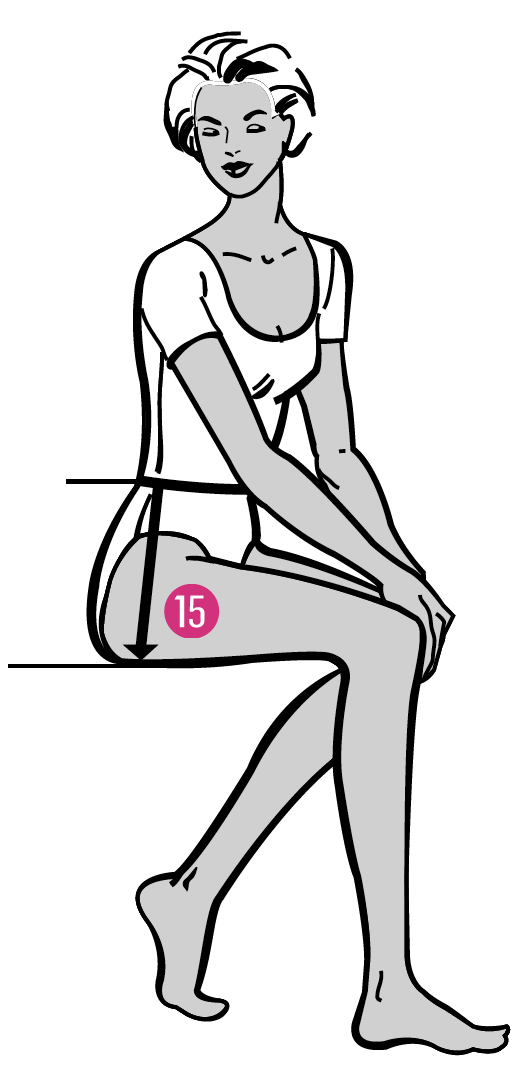

Unlike the other measurements, the control measurements do not appear on the burda size chart. You will have to measure the paper pattern pieces to find them. However, remember that the thigh circumference can have a comfort allowance (approx. 4 cm (1 5/8 in)) plus a model-based allowance. The seat also depends on the model. Skin-tight trousers should also be skin-tight at the crotch, while wide pleated trousers or comfy joggers are somewhat deeper.

